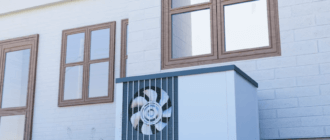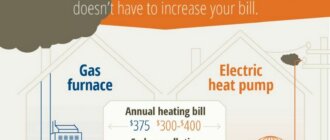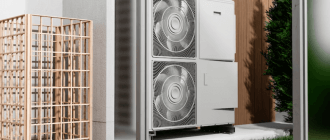Steps to Super Cool Your Home
Summer is here, and with it comes the heat that can make your home feel like a sauna. As temperatures rise, you may find yourself turning up the air conditioning and dreading your next energy bill. But what if we told you that there are steps you can take to super cool your home without breaking the bank? That’s right!
By implementing some basic principles of home cooling, optimizing your air conditioning settings, using ventilation techniques, insulating key areas of your home, and utilizing landscaping strategies for cooler temperatures; you can achieve maximum comfort in an energy-efficient way.
Keep reading to discover how to turn up the chill factor in your home this summer!
Basic principles of home cooling
Home cooling is an essential aspect of maintaining a comfortable living space. The basic principles of home cooling involve understanding the factors that influence the temperature inside your home and using various techniques to regulate it effectively.
Factors such as sunlight, humidity, airflow, and insulation all play a role in determining the overall temperature inside your home. For instance, windows that receive direct sunlight can significantly raise indoor temperatures during hot summer months.
Efficient use of air conditioning is also crucial for keeping your home cool. Setting optimal temperatures on your AC unit can help reduce energy consumption and prevent unnecessary strain on the system. Routine maintenance tips such as regularly cleaning filters can also increase efficiency.
Proper ventilation is another vital principle for maintaining a cool environment in your home. This involves allowing fresh air to circulate throughout the house by opening windows or installing fans or vents.
Effective use of shades, blinds, and curtains can also help block out unwanted heat during peak sun hours. Landscaping with shade trees or planting shrubs near windows can further enhance natural cooling methods.
By understanding these basic principles of home cooling, you’ll be able to create a more comfortable living environment while minimizing energy consumption and costs associated with excessive air conditioning usage.
Factors that influence home temperature
The temperature of your home is affected by many factors, some of which are common knowledge while others may be less obvious. One of the most significant influences on home temperature is the weather outside. During hot summer months, your home will naturally become hotter due to the sun’s rays and high temperatures outside.
Another factor that plays a role in home temperature is insulation. Proper insulation helps retain cool air during summers and warm air during winters, making it an essential element of any comfortable living space. Air leaks through doors and windows can also influence your indoor environment; these leaks cause cool air to escape from your house while letting hot outdoor air enter.
Appliances are another contributing factor to consider as they generate heat when they operate. Lights and electronics in use throughout the day will elevate indoor temperatures considerably if left unchecked for extended periods.
Household activities such as cooking or taking showers can significantly impact indoor temperatures; steam generated from these activities raises humidity levels indoors causing discomfort if not appropriately ventilated. Understanding all factors that contribute to home temperature fluctuations allows you to make informed decisions about maintaining optimal comfort levels within your living space year-round.
Efficient Use of Air Conditioning
Air conditioning is a great way to cool down your home, but it can also be one of the biggest energy consumers in your household. To get the most out of your air conditioner while saving on energy bills, here are some tips for efficient use:
Optimal Settings for Air Conditioning
Setting your air conditioner at the right temperature can make all the difference in terms of both comfort and efficiency. The Department of Energy recommends setting your thermostat to 78°F when you’re at home and raising it by several degrees when you’re away.
Routine Maintenance Tips for AC Units
Regular maintenance is essential to keep your AC unit running efficiently. Be sure to clean or replace filters every month or two, check refrigerant levels annually, and clean coils as needed.
The Role of Programmable Thermostats
Programmable thermostats allow you to set different temperatures throughout the day based on when you’ll be home and awake. This means that you don’t need to cool an empty house during work hours or while you’re sleeping.
By following these simple steps for efficient use of air conditioning, not only will you stay comfortable during hot weather, but also save money on energy bills without sacrificing convenience!
The Power of Ventilation
Proper ventilation is a key factor in keeping your home cool and comfortable. It involves the exchange of indoor air with fresh outdoor air, which helps to regulate temperature and humidity levels inside your house.
One of the most common ways to ventilate your home is through natural ventilation, such as opening windows and doors. This allows for fresh air to flow in and circulate throughout your living space.
Mechanical ventilation systems can also be installed to provide more controlled airflow. These include exhaust fans, which remove stale or humid air from bathrooms and kitchens, as well as supply vents that bring fresh air into the house.
Properly ventilating your home not only improves indoor air quality but also reduces the workload on your cooling system. By allowing fresh outdoor air to come inside, you can lower indoor temperatures without relying solely on an AC unit.
In addition, good ventilation prevents moisture buildup that can lead to mold growth or other health hazards. It also helps eliminate unpleasant odors caused by cooking or pet dander.
Proper ventilation is an essential aspect of maintaining a comfortable and healthy living environment while promoting energy efficiency for cost-effective cooling solutions.
How insulation works
Insulation is a crucial element in home cooling that many people tend to overlook. It works by minimizing the transfer of heat between the inside and outside of your home through walls, ceilings, floors, and roofs. There are different types of insulation materials available on the market such as fiberglass batts, spray foam insulation, cellulose insulation, and reflective barriers.
The primary role of insulation is to trap air pockets within its fibers or particles which reduce thermal conductivity effectively. This means that during warm weather conditions when you want to keep your home cool for longer periods without relying on an AC system endlessly running all day long – properly installed insulation can help maintain lower temperatures indoors.
It’s important to note that not all areas in your home require the same level or type of insulation material. For instance, attic spaces tend to be one area where most homeowners neglect adding proper levels of insulating material; this results in inefficient energy use due to unwanted heat gain from an overheated attic space seeping down into living areas below.
To ensure optimal comfort levels throughout your house while also saving money on monthly energy bills – it’s essential always check with a professional HVAC contractor before deciding on any specific type(s) or amount(s) needed for various rooms or sections within your property’s structure.
Areas of the home that should be insulated
Insulating your home properly is crucial to creating a comfortable and energy-efficient environment. The insulation works by preventing the transfer of heat between the inside and outside of your home. This keeps your home cool in the summer and warm in the winter, without having to rely heavily on air conditioning or heating systems.
One area that should be insulated is the attic. Since hot air rises, an uninsulated attic can lead to significant heat loss during colder months. Proper insulation helps keep this valuable heated air inside your living space where it belongs.
Another important area to insulate is exterior walls, especially those facing north or west since they tend to receive more direct sunlight throughout the day. Insulating these walls will help reduce heat gain during peak hours of sun exposure.
Basement floors are also prime candidates for insulation since they sit below ground level where temperatures tend to be cooler. Without proper insulation, cold air from beneath can seep into your living spaces making it uncomfortable during colder seasons.
Windows and doors are notorious culprits when it comes to drafts and leaks which makes them an essential part of any good insulation plan. Caulking around frames or installing weather-stripping can go a long way toward sealing gaps that allow unwanted airflow into (or out) of your home.
Properly insulating key areas within your home not only helps you stay comfortable year-round but also saves money by reducing energy costs associated with cooling/heating systems – all while contributing towards a greener planet!
Using Shades, Blinds, and Curtains Effectively
Shades, blinds, and curtains are more than just decorative elements in your home. They can be used to control the amount of heat that enters your home through windows or doors. During hot summer days, it is essential to use these window treatments effectively to achieve a cooler indoor temperature.
One way to do this is by using light-colored shades or curtains since they reflect the sun’s rays rather than absorbing them. You should also close all shades or curtains during the hottest parts of the day when sunlight is most intense.
Blinds provide another option for controlling light and heat levels inside homes; they come in various materials such as wood, plastic, metal and can be adjusted according to personal preferences. For example, tilting slats at an angle will reduce direct sunlight while still allowing natural light into rooms.
Another useful tip for keeping your home cool with window treatments is by investing in insulating curtains designed specifically for energy efficiency purposes. These types of drapes have multiple layers that help block out both cold drafts in winter months and warm air currents during summers.
Utilizing window coverings effectively could save you a lot on energy bills while creating a comfortable living space all year round – especially during those scorching hot days!
Landscaping for Cooler Homes
Landscaping can be a great way to keep your home cool during the summer months. By planting trees and shrubs in strategic locations around your property, you can create natural shade that will help lower indoor temperatures. Trees with large leaves are particularly effective at blocking out sunlight, so consider planting some in areas where the sun is most intense.
Another option is to use water features like fountains or ponds as part of your landscaping design. Water has a cooling effect on the air around it, making it a great addition to any backyard oasis. You could also plant flowers that bloom in cooler colors like blues and purples, which have a calming effect on the mind and body.
It’s also important to consider how hardscaping elements like concrete patios and walkways absorb heat and radiate it back into your home. To minimize this effect, try using materials like gravel or pavers instead of solid surfaces wherever possible.
Remember that proper maintenance is key when it comes to keeping your landscaping effective for temperature control. Regular pruning and watering will ensure that plants stay healthy and continue providing shade throughout the season. With these tips in mind, you’ll be able to create a beautiful outdoor space that keeps your home cool all summer long!
Energy-Efficient Appliances and Lighting
One of the best ways to super cool your home is by investing in energy-efficient appliances and lighting. These types of products are designed to consume less electricity, which can help reduce your monthly utility bills while also benefiting the environment.
When it comes to appliances, look for those that have been certified by ENERGY STAR®. These products meet strict efficiency guidelines set by the U.S. Environmental Protection Agency (EPA) and can save you up to 30% on related electricity costs.
Another way to maximize energy savings is through LED light bulbs, which use up to 80% less power than traditional incandescent bulbs. They also last much longer, reducing replacement costs over time.
Consider installing motion sensors or timers for outdoor lights as well. This will help ensure they are only on when needed, saving even more energy in the long run.
Making small changes like these can add up over time and make a big difference in both your comfort level and wallet!
Conclusion
There are various ways to super cool your home and make it more energy-efficient. From efficient use of air conditioning units to proper insulation, ventilation, and landscaping, you can create a comfortable living environment while reducing your energy bills.
It’s important to note that these steps require some investment upfront but will result in significant long-term savings for homeowners. By implementing these strategies into your daily routine, you’ll not only enjoy a cooler and more comfortable home but also help reduce greenhouse gas emissions that contribute to climate change.
Remember always to set optimal temperatures on air conditioners and invest in programmable thermostats as they offer convenience while saving costs. Ventilation helps remove stale air from homes while bringing in fresh outdoor air that is essential for respiratory health.
Insulation ensures that heat loss is minimized through roofs, walls, or even floors hence cutting down the burden on cooling systems. Using shades effectively blocks out unwanted sun rays thus keeping indoor spaces cooler without using electricity.
Making use of energy-efficient appliances and lighting options reduces the amount of power consumed by households ultimately contributing positively towards environmental conservation efforts. With all this information at hand- why not give it a try? Make an effort today to super cool your home!
Recent Queries:




